Find the equivalent resistance of the network shown in figure between the points . Solution in Gujrati
Suppose a current I enters the network at point a and the same current leaves it at point b. Supposem the currents in ac, ad and ae are respectively. Similar will be the distribution of current at b. The current I leaving at b is composed if form db, from cb andfrom eb. The situation is shown in figure.
As the current in ae is equal to that is eb, the current in ce will equal to the current in ed fron the junction law. If we assume that the branches ced ad aeb do not physically touch at e,nothing will be changed in the current distribution.We can then represent the branch aeb by a single resistance of 10(Omega) connected between a and b. Similarly, the branch ced may be replaced a single resistor between c and d. The circuit is redrawn in figure.This is same as the circuit in figure conected in parallel with a resistance of .So the network is equivalent to a parallel conbination of resistor. The equivalent resistance of the whole network is, therefore,
Topper's Solved these Questions
- ELECTRIC CURRENT IN CONDUCTORSBook:HC VERMAChapter:ELECTRIC CURRENT IN CONDUCTORSExercise:worked out Example
Explore 1 Video
- ELECTRIC CURRENT IN CONDUCTORSBook:HC VERMAChapter:ELECTRIC CURRENT IN CONDUCTORSExercise:Short Answer
Explore 17 Videos
- ELECTRIC CURRENT IN CONDUCTORSBook:HC VERMAChapter:ELECTRIC CURRENT IN CONDUCTORSExercise:Exercises
Explore 84 Videos
- DISPERSION AND SPECTRABook:HC VERMAChapter:DISPERSION AND SPECTRAExercise:Exercises
Explore 11 Videos
- ELECTRIC CURRENT THROUGH GASESBook:HC VERMAChapter:ELECTRIC CURRENT THROUGH GASESExercise:Exercises
Explore 23 Videos
Similar Questions
Find the equivalent resistances between the points a and c of the network shown in figure. Each resistance is equal to r.
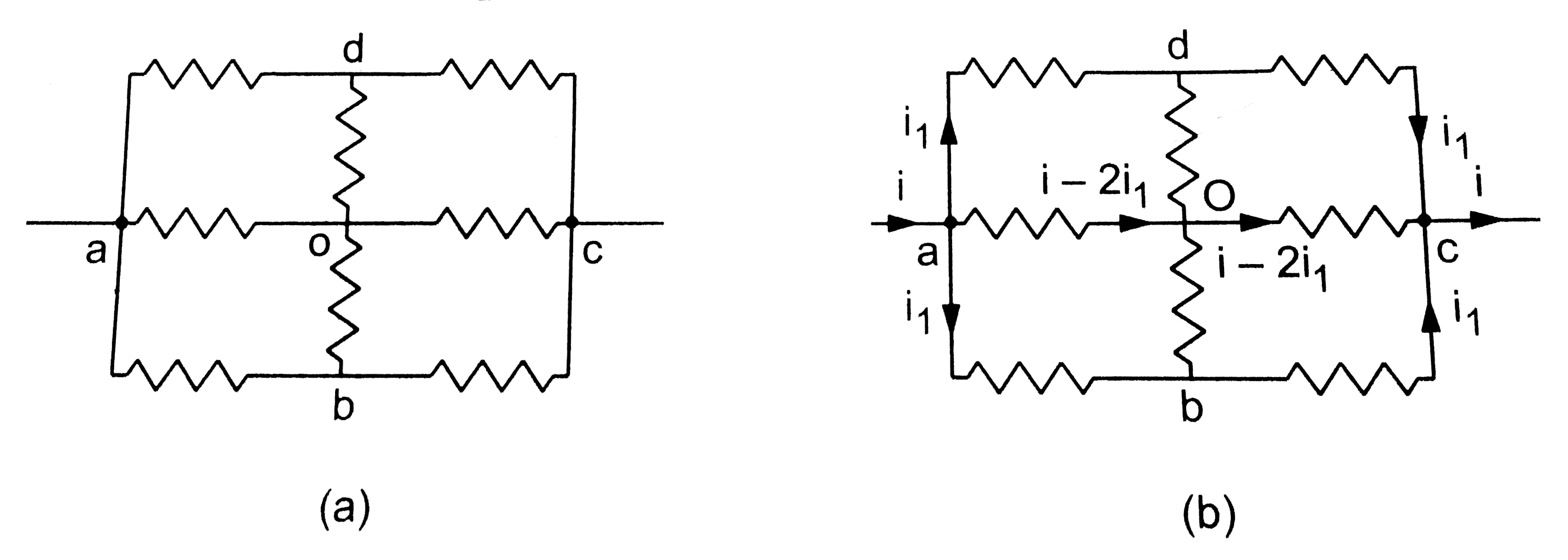
View SolutionSuppose you have three resistor each of value (30Ω).List all the different resistances you can obtian using them.
View SolutionThe amount of charge passed in time t through a cross-section of a wire is
Q(t)=At2+Bt+C.
(a)Write the dimensional formulae for A,B and C.
(b) If the numerical values of A,B,and C are 5,3 and 1 respectively in SI units,find the value of the current at t=5 s.
View SolutionA flint glass prism and a crown glass prism are to be combined in such a way that the deviation of the mean ray is zero. The refractive index of flint and crown glasses for the mean ray are 1.620 and 1.518 respectively. If the refracting angle of the flint prism is 6.0∘, what would be the refracting angle of the crown prism ?
View SolutionA discharge tube contains helium at a low pressure. A large potential difference is applied across the tube. Consider a helium atom that has just been ionized due to the detachment of an atomic electron. Find the ratio of the distance travelled by the free electron to that by the positive ion in a short time dt after the ionization.
View SolutionFind the equivalent resistance between the point a and b of the network shown in figure.
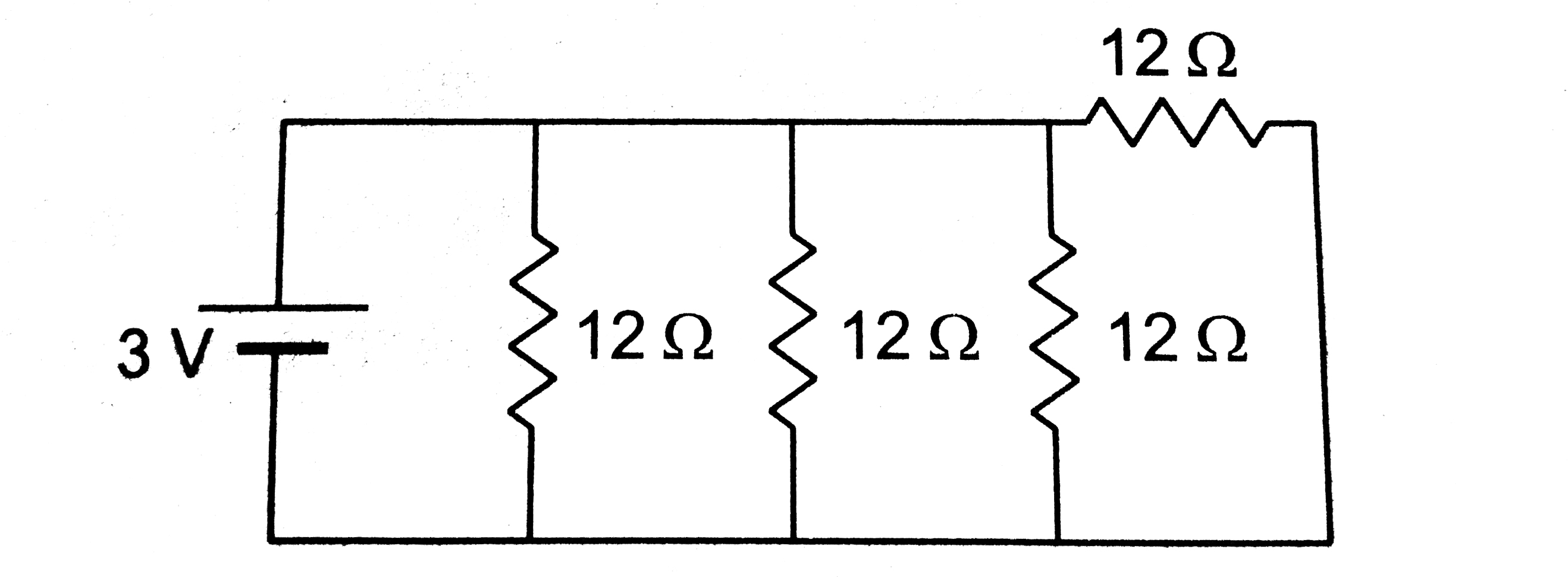
View SolutionFind the equivalent resistance of the network shown in figure between the points aandb.
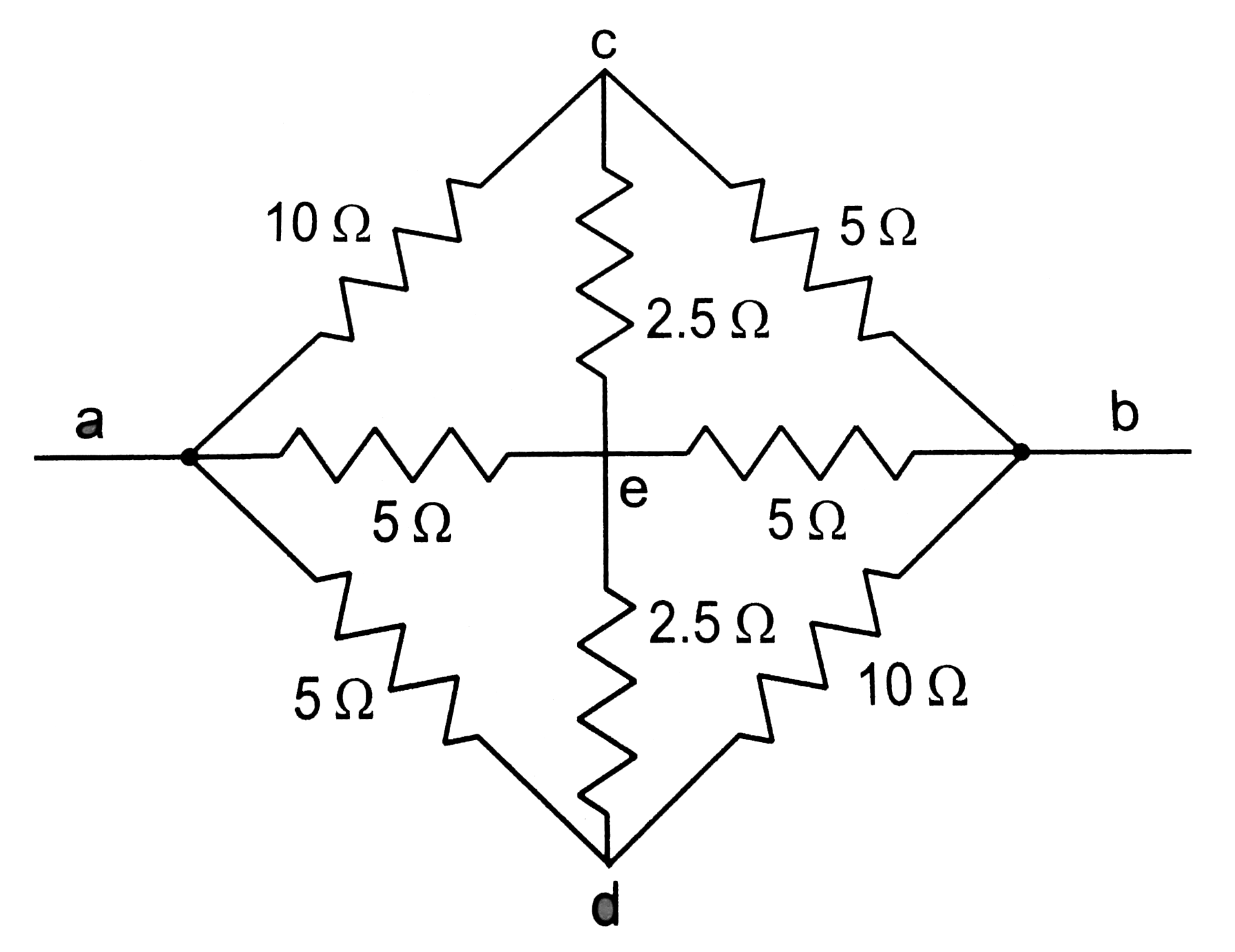
View SolutionFind the equivalent resistances of the network shown in figure between the point a and b.
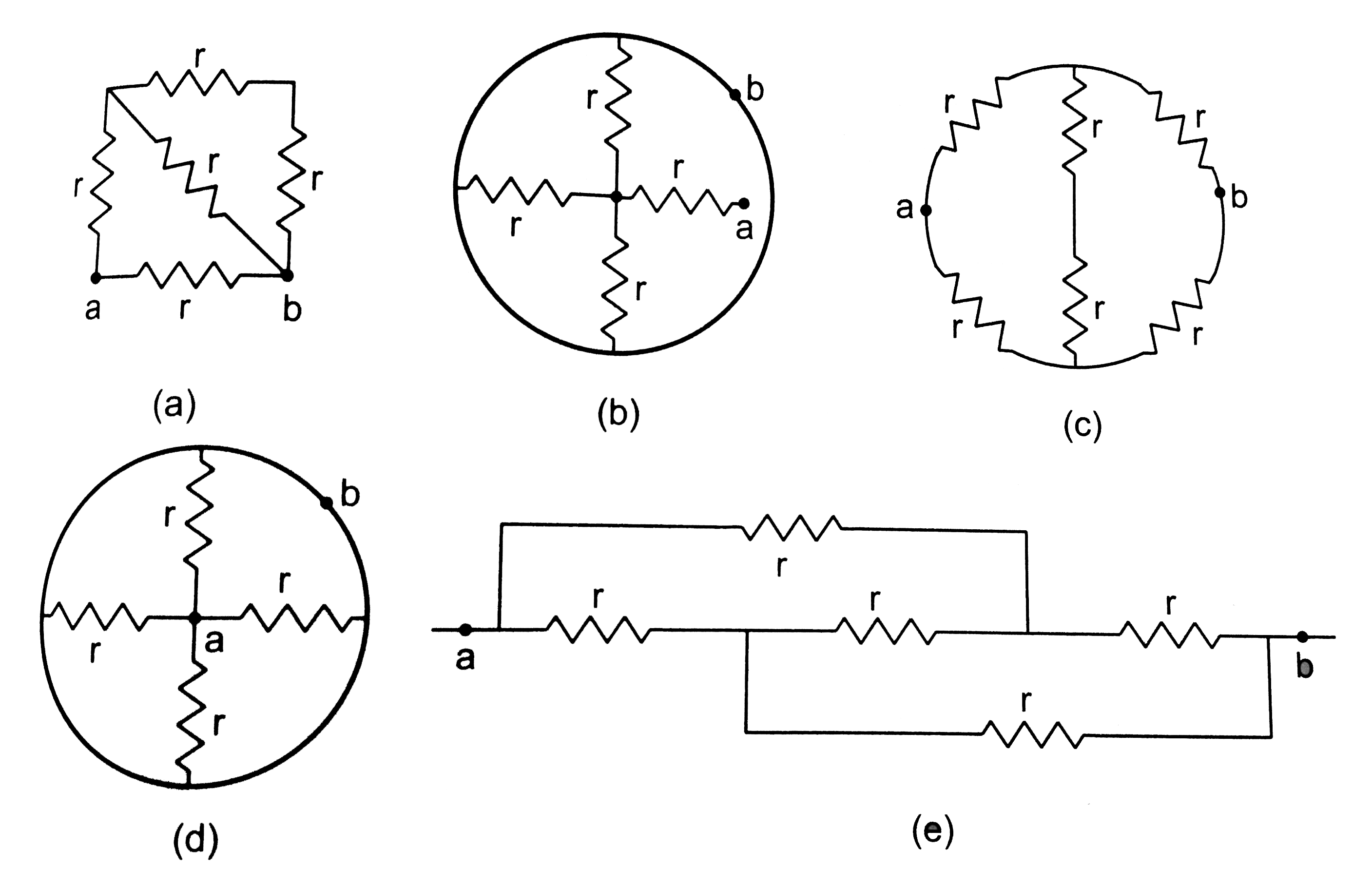
View SolutionFind the equivalent resistance of the networks shown in figure between the points a and b.
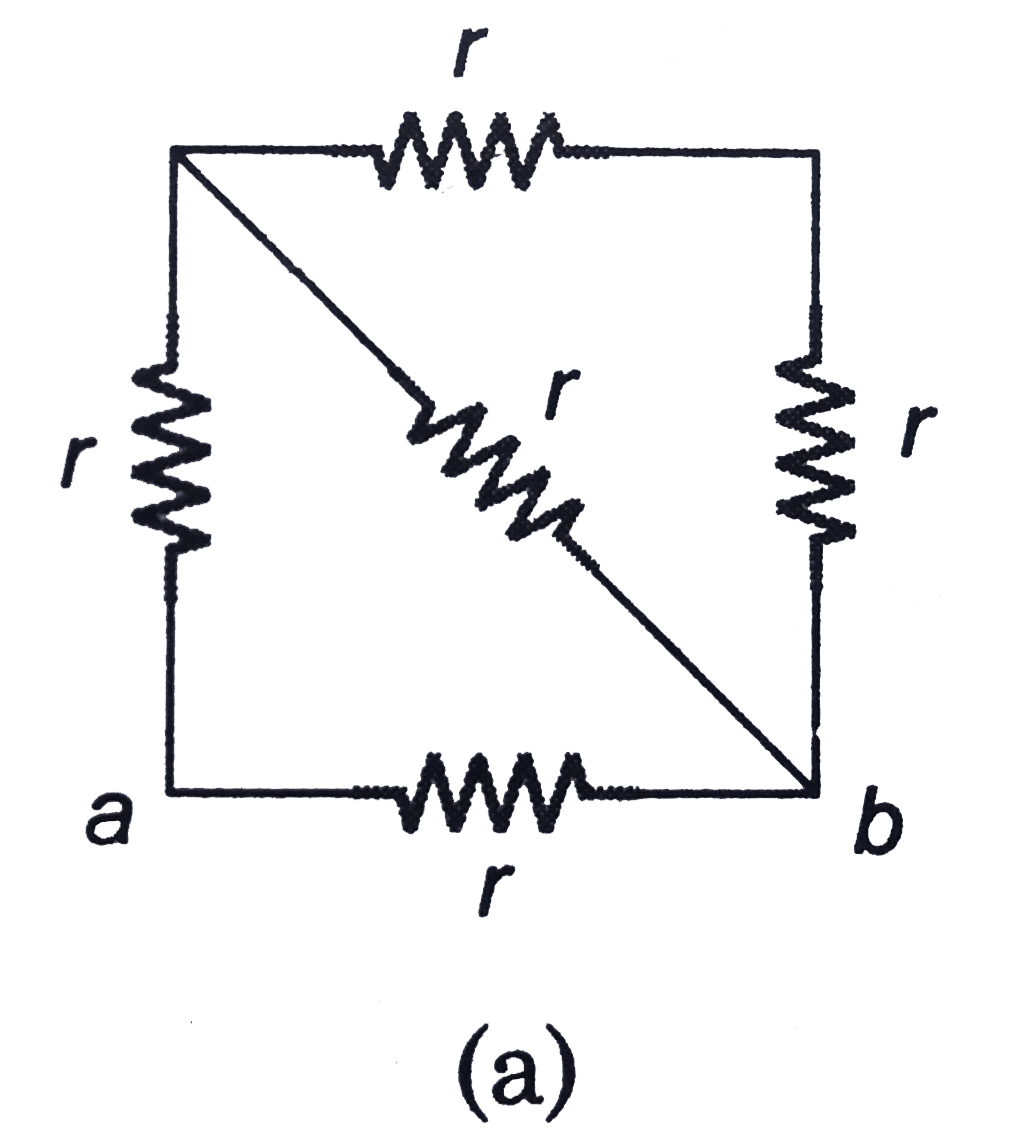
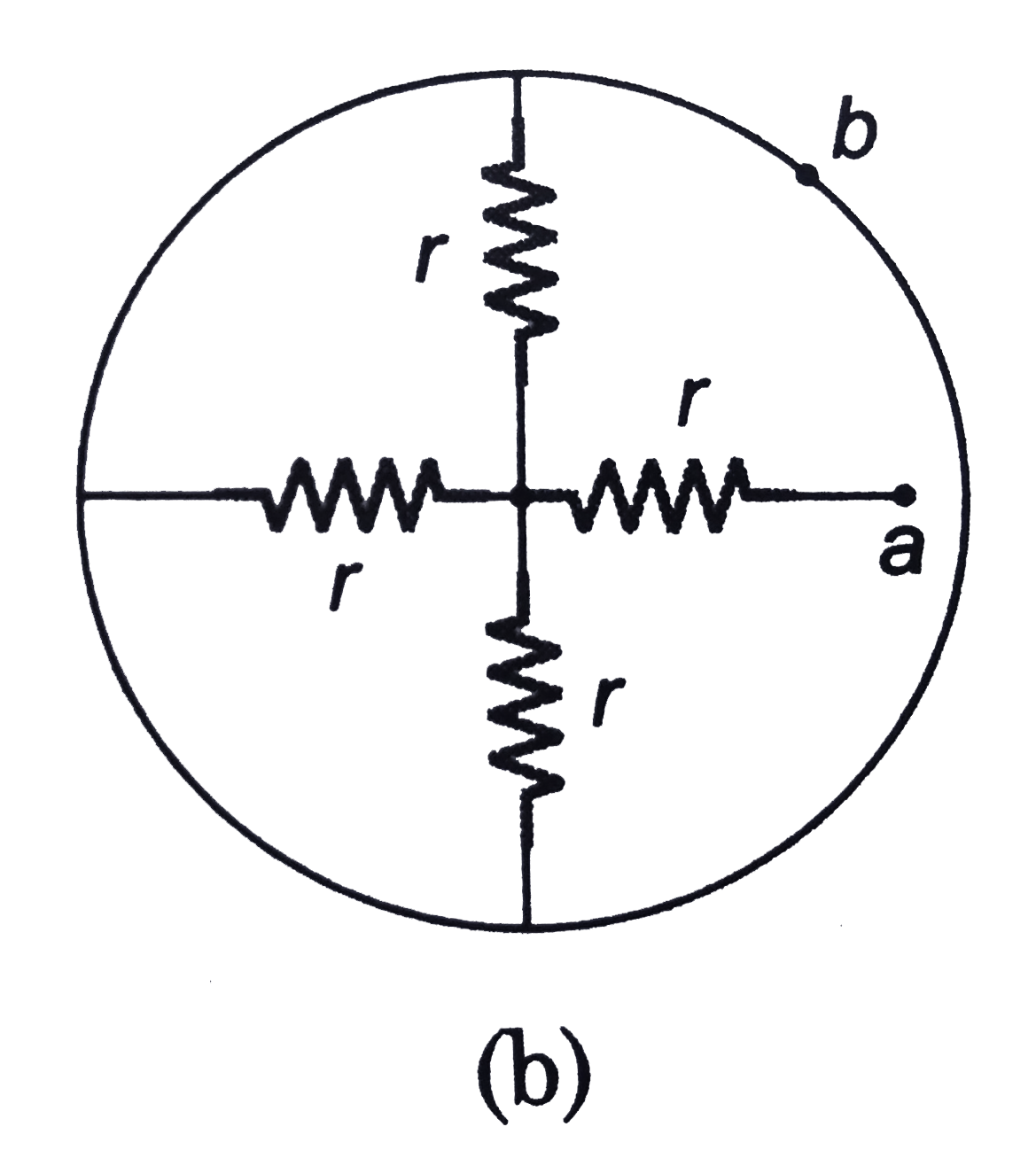
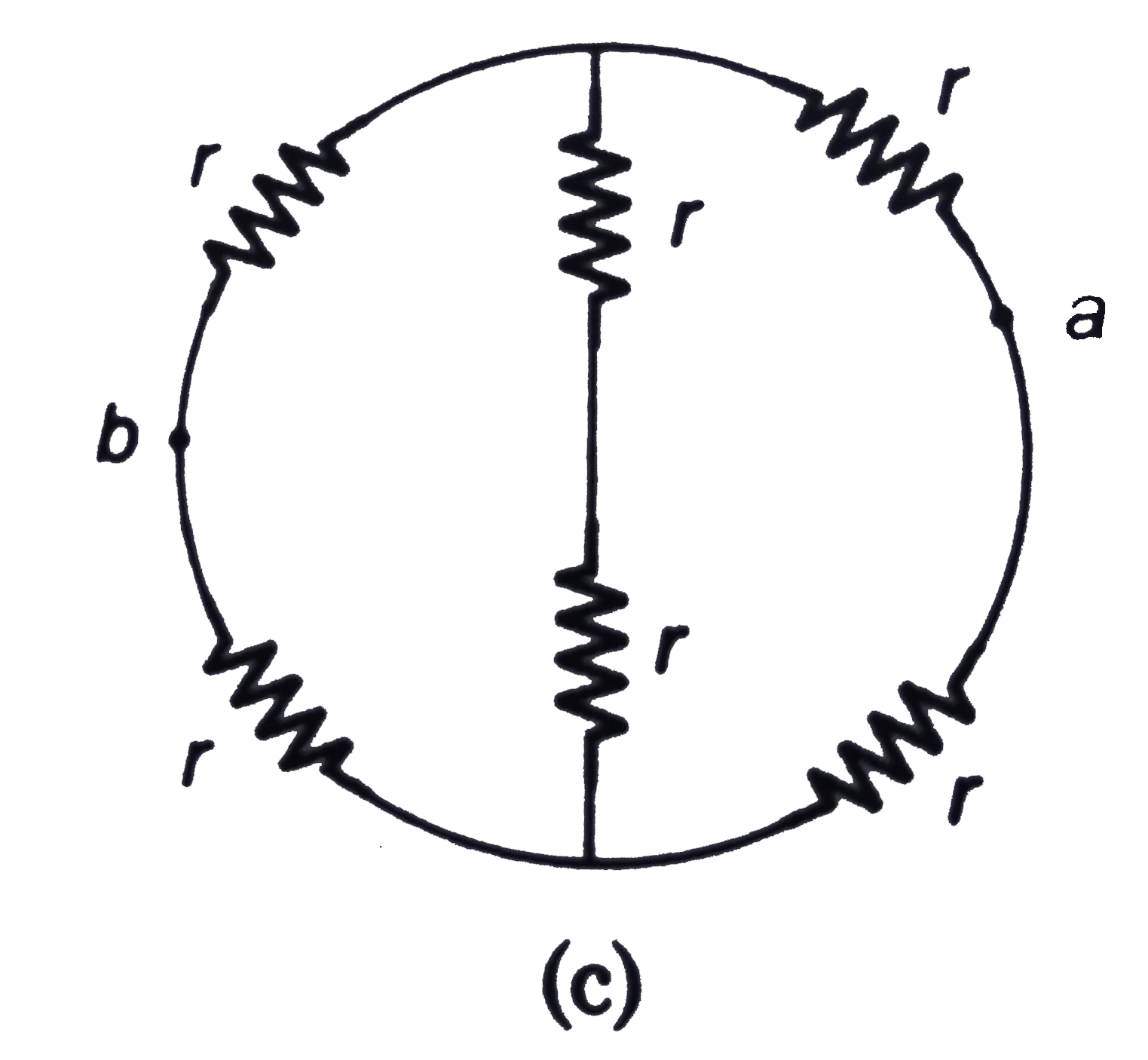
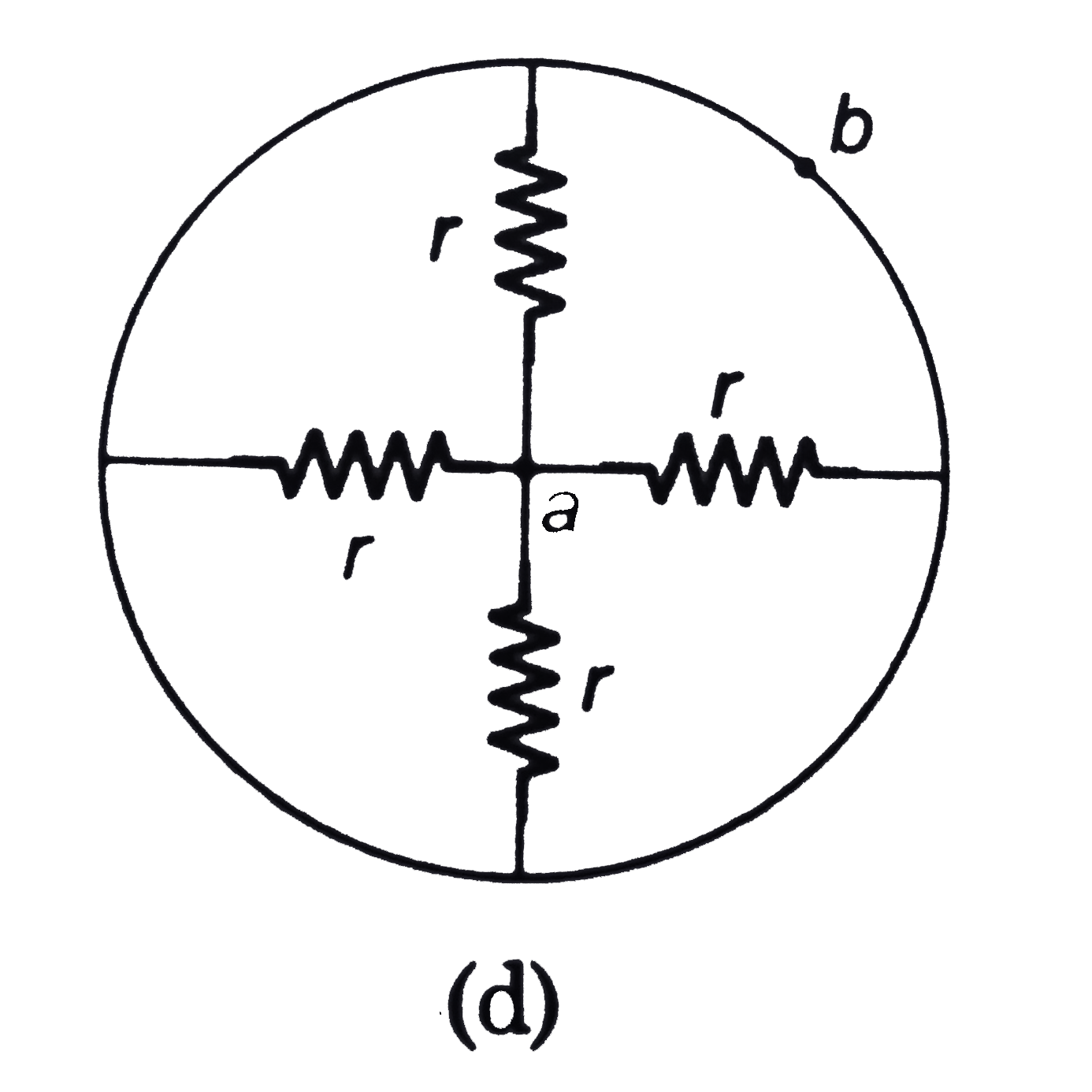
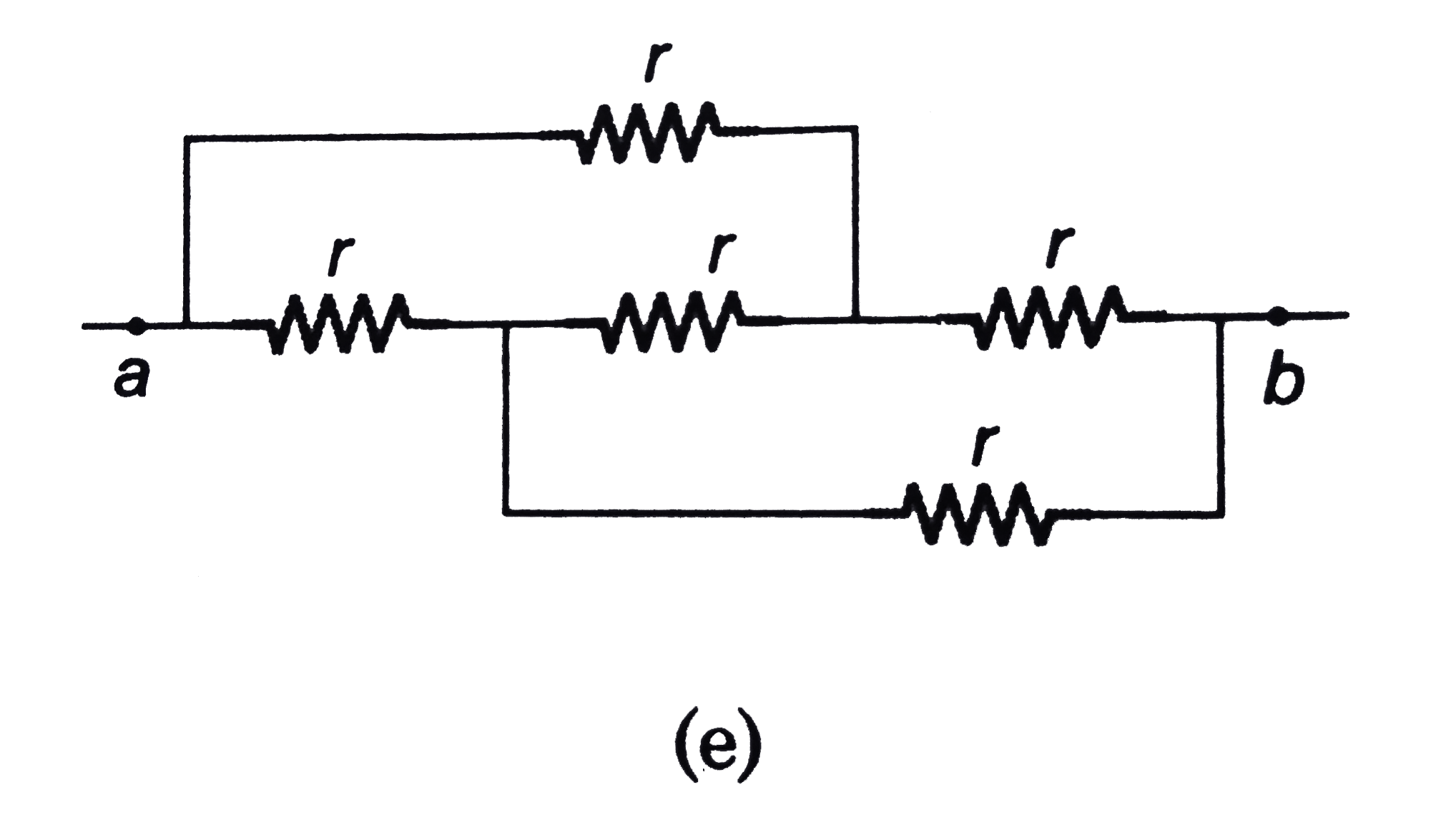
View SolutionFind the equivalent resistance between the terminal points A and B in the network shown in the figure.
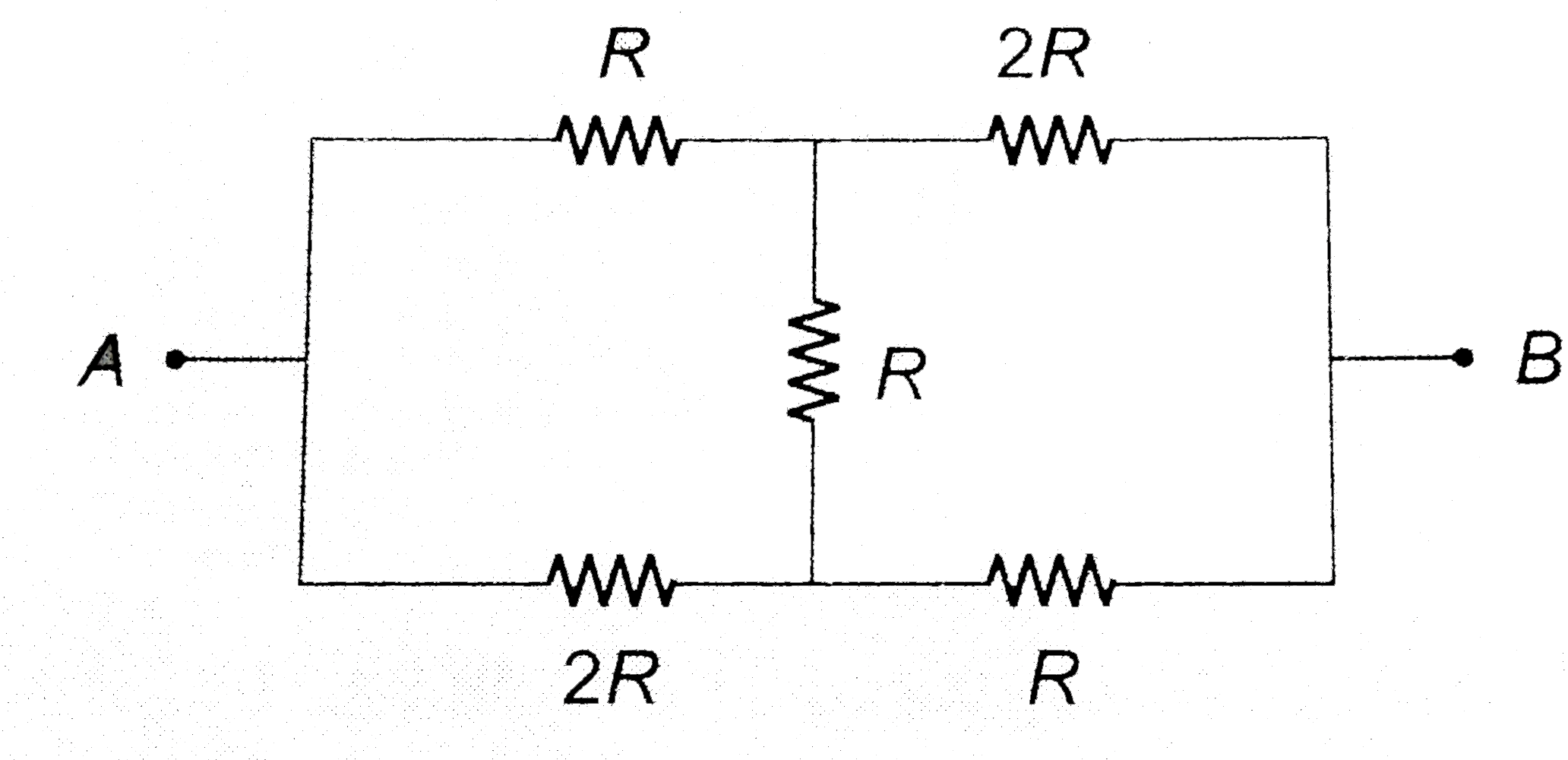 .
.
View SolutionFind the equivalent resistance between point a and b in the network shown in figure.
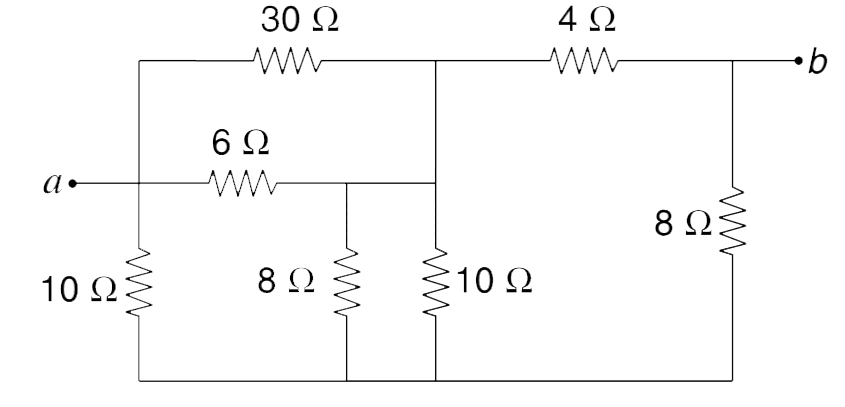
View SolutionFind the equivalent resistance of the networks shown in figure. between the points A and B.
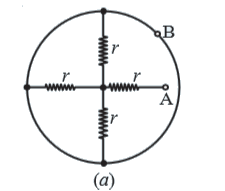
View SolutionFind the equivalent resistance of the networks shown in figure between the points A and B.
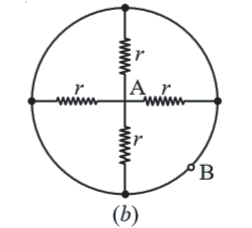
View SolutionFind the equivalent resistance of the networks shown in figure between the points A and B
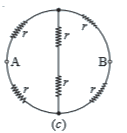
View SolutionFind the equivalent resistance of the network shown in figure between the points A and B .

View SolutionFind the equivalent resistances of the network shown in figure between the point a and b.

View Solution